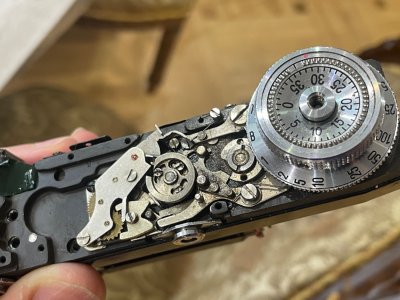Shostka
Member
Hello from Tokyo!
I found strange marking engraved ContaxII on the internet. Does anyone know the meaning of this marking "⊕" ? I have no idea, evidence or record for this character...... It's similar to the emblem shape of Shimazu, who ruled Kagoshima, Japan...
I hope Contax experts in this forum have some information...

I found strange marking engraved ContaxII on the internet. Does anyone know the meaning of this marking "⊕" ? I have no idea, evidence or record for this character...... It's similar to the emblem shape of Shimazu, who ruled Kagoshima, Japan...
I hope Contax experts in this forum have some information...





